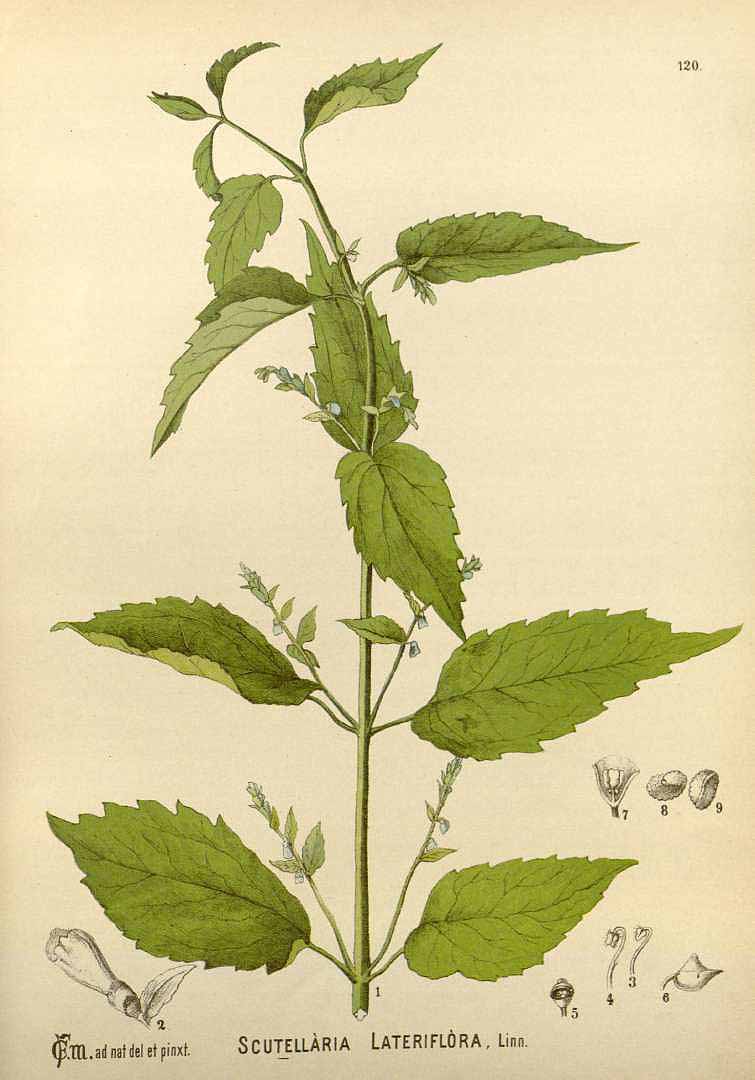 Also Known As:
Also Known As:
American Skullcap, Blue Pimpernel, Blue Skullcap, Escutelaria, Helmet Flower, Scutellaria.
Scientific Name:
Scutellaria lateriflora.
Family: Lamiaceae/Labiatae.
People Use This For:
Skullcap is used for insomnia, anxiety, nervous tension, allergies, dermatitis, inflammation, and spasms.
Safety:
There is insufficient scientific information available about the use of skullcap.
Pregnancy and Lactation: Refer to a Medical Herbalist.
Effectiveness:
INSUFFICIENT RELIABLE EVIDENCE to RATE
Anxiety. Preliminary evidence suggests that healthy people who take a single dose of skullcap extract might feel more relaxed than tense. This effect appears to last for about 2 hours.41 But it is not known if taking skullcap is effective for anxiety disorders or if extended use is beneficial. More scientific evidence is needed to rate skullcap for this use.
Mechanism of Action:
The applicable parts of skullcap are the above ground parts. The principle flavonoids of skullcap are baicalin and wogonin.42,41
Skullcap also contains lignins, resins, tannins, and volatile oils.42
It is thought that the flavonoid constituents of skullcap might act as GABA agonists and therefore have a sedating and anxiolytic effect.41
Constituents of skullcap seem to bind the serotonin receptor 5-HT7. But it's not known if these constituents have agonist or antagonist properties on the receptor.42 Skullcap's effects on the serotonin receptor may be involved in potential sedative properties.
Adverse Reactions:
Orally, single doses of skullcap extract appear to be well-tolerated. A single skullcap extract dose of 100 mg does not seem to affect cognition or cause significant sedation. But a higher dose of 200 mg might cause more sedation and cognitive impairment.41 The effect of these typical doses in repeated doses is not known.
Interactions with Herbs & Supplements:
Herbs and Supplements with Sedative Properties: Theoretically, concomitant use with herbs that have sedative properties might enhance therapeutic and adverse effects.
Interactions with Drugs:
None known.
Interactions with Foods:
None known.
Interactions with Lab Tests:
None known.
Interactions with Diseases or Conditions:
None known.
Dosage/Administration:
Dr Clare’s Blends: 1 gm per day
Oral: A typical dose is 1-2 grams or as a tea three times daily.43 The extract is typically used 2-4 mL (1:1 in 25% alcohol) three times daily. The tincture is typically used 3-6 mL (1:5 in 45% alcohol).43
Specific References: SKULLCAP
41. Wolfson P, Hoffmann DL. An investigation into the efficacy of Scutellaria lateriflora in healthy volunteers. Altern Ther Health Med 2003;9:74-8.
42. Gafner S, Bergeron C, Batcha LL, et al. Inhibitor of [3H]-LSD binding to 5-HT7 receptors by flavonoids from Scutellaria lateriflora. J Nat Prod 2003;66:535-7.
43. Newall CA, Anderson LA, Philpson JD. Herbal Medicine: A Guide for Healthcare Professionals. London, UK: The Pharmaceutical Press, 1996.